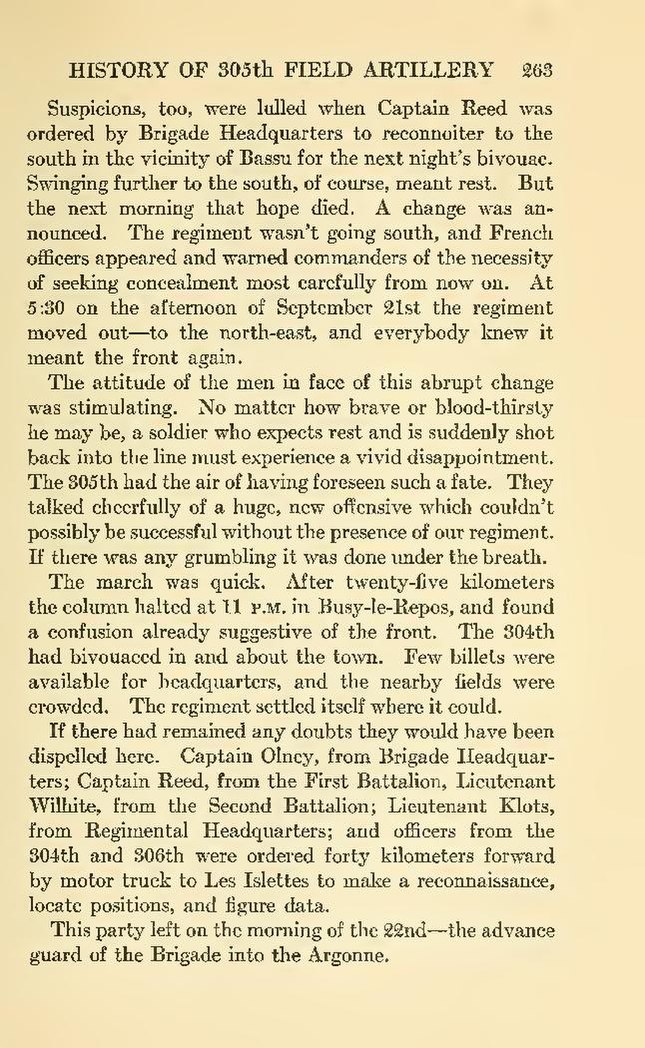Suspicions, too, were lulled when Captain Reed was
ordered by Brigade Headquarters to reconnoiter to the
south in the vicinity of Bassu for the next night's bivouac.
Swinging further to the south, of course, meant rest. But
the next morning that hope died. A change was announced. The regiment wasn't going south, and French
officers appeared and warned commanders of the necessity
of seeking concealment most carefully from now on. At
5:30 on the afternoon of September 21st the regiment
moved out—to the north-east, and everybody knew it
meant the front again.
The attitude of the men in face of this abrupt change was stimulating. No matter how brave or blood-thirsty he may be, a soldier who expects rest and is suddenly shot back into the line must experience a vivid disappointment. The 305th had the air of having foreseen such a fate. They talked chccrfully of a hugc, new offensive which couldn't possibly be successful without the presence of our regiment. If there was any grumbling it was done under the breath. The march was quick. After twenty-five kilometers the column lialted at 11 p.m. in Busy-le-Repos, and found a confusion already suggestive of the front. The 304th had bivouaced in and about the town. Few billets were available for bcadquarters, and the nearby fields were crowded. The regiment settled itself where it could. If there had remained any doubts they would have been dispelled here. Captain Olncy, from Brigade Headquarters; Captain Reed, from the First Battalion, Licutenant Wilhite, from the Second Battalion; Lieutenant Klots, from Regimental Headquarters; and officers from the 304th and 306th were ordered forty kilometers forward by motor truck to Les Islettes to make a reconnaissance, locate positions, and figure data.
This party left on the morning of the 22nd-the advance guard of the Brigade into the Argonne.
